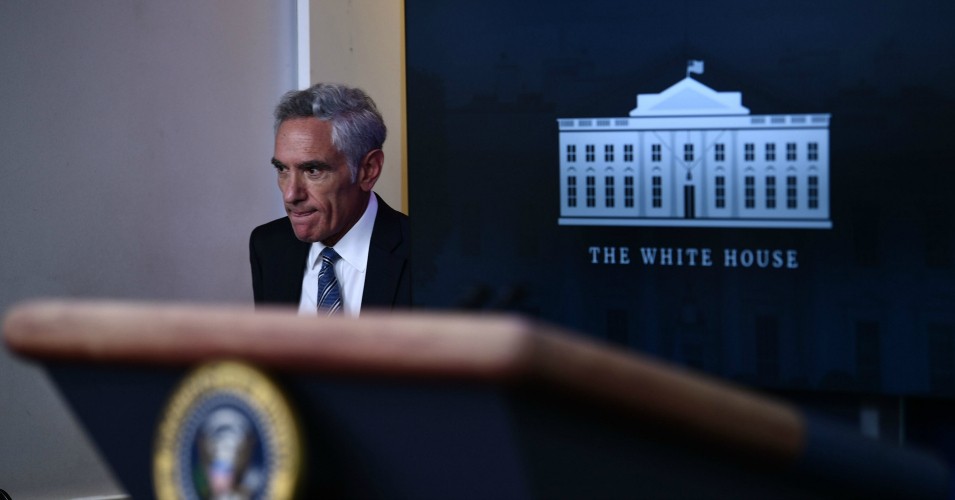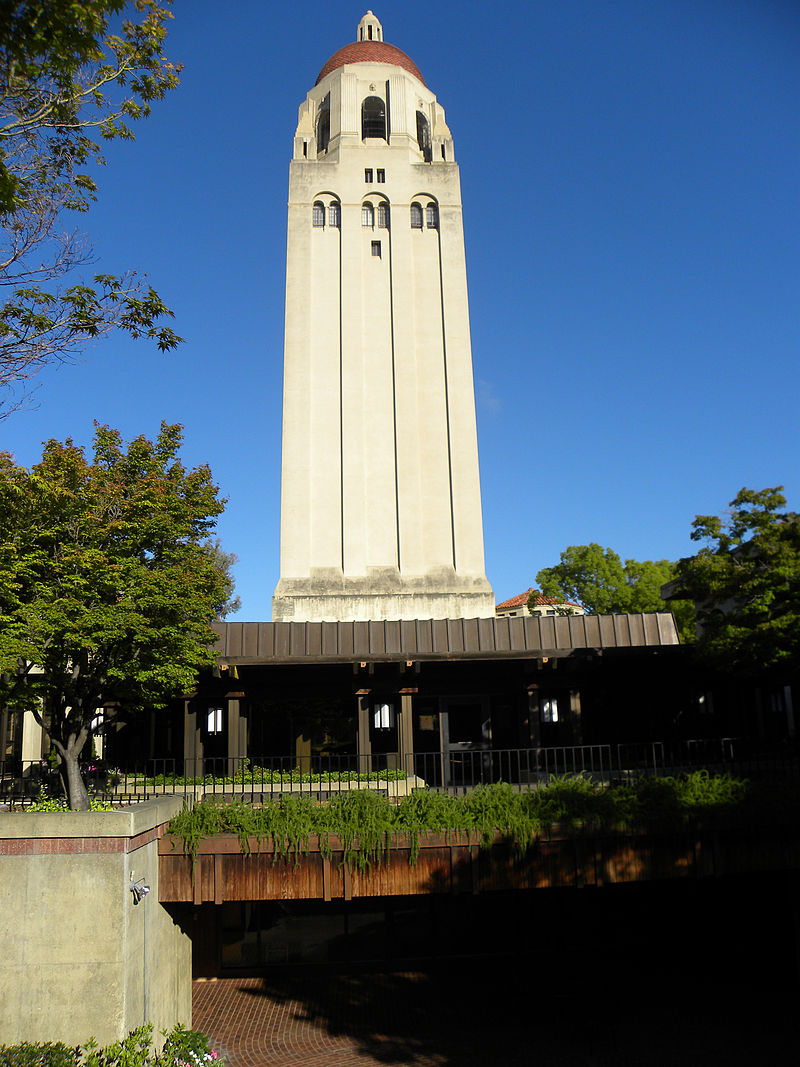See also:
-
[2020-08-31] Health Experts Horrified as New Trump COVID-19 Adviser Pushes 'Herd Immunity' Strategy That Could Kill 2 Million Americans. "It's not edgy, contrarian," one public health expert said of the "herd immunity" approach. "It's dangerous and terrifying."
-
A top White House coronavirus adviser brought on earlier this month despite his lack of expertise in infectious diseases or epidemiology is reportedly pushing the Trump administration to adopt a so-called "herd immunity" strategy to the pandemic that public health experts warn could kill millions of Americans and infect hundreds of millions more.
-
The Washington Post reported Monday [2020-08-31] that Scott Atlas, a neuroradiologist from the right-wing Hoover Institution, caught President Donald Trump's attention "with a spate of FOX News appearances in recent months" in which Trump downplayed the severity of COVID-19 and questioned the need for lockdowns and social distancing measures.
-
Scott Atlas -- who one commentator described as the "anti-Fauci," referring to National Institute of Allergy and Infectious Diseases director Dr. Anthony Fauci -- has "advocated that the United States adopt the model Sweden has used to respond to the virus outbreak... which relies on lifting restrictions so the healthy can build up immunity to the disease rather than limiting social and business interactions to prevent the virus from spreading," according to the Washington Post.
-
Sweden's decision to forego strict lockdowns in favor of more relaxed social distancing guidelines has been criticized by public health experts as a reckless approach to the COVID-19 pandemic that contributed to the country's high death rate compared to other European nations. Pursuing a similar strategy in the U.S., a country with a population of 328 million, would be catastrophic, experts warned.
-
Jonathan Reiner, a cardiologist and professor at George Washington University School of Medicine and Health Sciences, tweeted Monday that to achieve "Herd Immunityherd immunity" without a vaccine, "about 250 million Americans would contract the virus and 1.5-2 million would die." A Washington Post analysis found that 2.13 million deaths may be required to "reach a 65 percent threshold of herd immunity, assuming the virus has a one percent fatality rate."
Dr. Scott Atlas, Senior Fellow at Stanford University's Hoover Institution, arrives before President Donald Trump speaks during a news conference in the Brady Briefing Room of the White House in Washington, D.C. on August 13, 2020.
[Image source. Click image to open in new window.]
Scott Atlas is the Robert Wesson Senior Fellow at Stanford University's Hoover Institution, a conservative public policy think tank. From 1998 to 2012, he was Professor and Chief of Neuroradiology at Stanford University Medical Center. Atlas served as a senior advisor for health care to the Republican presidential campaigns of Rudy Giuliani in 2008 and Mitt Romney in 2012.
Scott Atlas has advocated for eliminating the Affordable Care Act, known as Obamacare, and replacing it with modified tax deductions and incentives. He has also called for changes to Medicare and "aggressive reforms" to Medicaid to encourage private insurance and health savings accounts.
Scott Atlas is a frequent guest on FOX News.
Hoover Institution Library and Archives, Stanford University.
[Image source. Click image to open in new window.] -
The Hoover Institution on War, Revolution, and Peace is an American public policy think tank and research institution located at Stanford University in California. Its mission statement outlines its basic tenets: representative government, private enterprise, peace, personal freedom, and the safeguards of the American system. The Hoover Institution is generally described as conservative. Thomas W. Gilligan, a director at the Hoover has disputed the application of political labels to the institute, saying the Hoover Institution's charter is not partisan but rather tries to remind Americans to "think twice about the dangers of the hubris of centralized solutions to civic and political challenges."
The institute began as a library founded in 1919 by Stanford alumnus Herbert Hoover, before he became President of the United States. The library, known as the Hoover Institution Library and Archives, houses multiple archives related to Hoover, World War I, World War II, and other world-historical events.
According to the "2019 Global Go To Think Tank Index Report" (Think Tanks and Civil Societies Program, University of Pennsylvania), Hoover is ranked 22nd of the "Top Think Tanks in the United States."
The Hoover Institution has been a place of scholarship for individuals who previously held high-profile positions in government, such as George Shultz, Condoleezza Rice, Michael Boskin, Edward Lazear, John B. Taylor, Edwin Meese, and Amy Zegart -- all Hoover Institution fellows. In 2007, retired U.S. Army General John P. Abizaid, former commander of the U.S. Central Command, was named the Hoover Institution's first annual Annenberg Distinguished Visiting Fellow. Former Secretary of Defense General James Mattis served as a research fellow at Hoover before being appointed by the Trump administration.
The Hoover Institution is a unit of Stanford University but has its own board of overseers.
History
The Hoover Institution was set up by Herbert Hoover, a wealthy engineer who was one of Stanford's first graduates. In 1928 he was elected President of the United States. He had been in charge of major relief efforts in Europe in 1914-1917 in Belgium and again after the world war in central and eastern Europe, especially Russia. Hoover's plan was to collect and permanently preserve the documents of major events for open research. Hoover's search team obtained rare printed and unpublished material. They included the papers of activists on the far left and far right, including the files of the Okhrana (the Tsarist secret police). In 1960, W. Glenn Campbell became director. He specialized in fund raising, setting up research operations and building collections regarding China and the Soviet Union. Relations improved with the host university.
In 1919, Hoover donated $50,000 to Stanford University to support the collection of primary materials related to World War I, a project that became known as the Hoover War Collection. Supported primarily by gifts from private donors, the Hoover War Collection flourished in its early years. In 1922, the Collection became known as the Hoover War Library. The Hoover War Library was housed in the Stanford Library, separate from the general stacks. By 1926, the Hoover War Library was known as the largest library in the world devoted to the Great War. By 1929, it contained 1.4 million items and was becoming too large to house in the Stanford Library. In 1938, the War Library revealed building plans for Hoover Tower, which was to be its permanent home independent of the Stanford Library system. The 285-foot tall tower was completed in 1941, Stanford University's fiftieth anniversary. Since then, the tower has been a key landmark for campus. On its 14th floor, the tower has an observation deck which holds a carillon of 48 bells that were donated to former president Hoover in 1940.
By 1946, the agenda of the Hoover War Library had expanded to include research activities; thus the organization was renamed the Hoover Institution and Library on War, Revolution and Peace. At this time, Herbert Hoover was living in New York City but remained integrally involved in the Hoover Institution and Library as a benefactor, fundraiser, and consultant.
In 1956 former President Hoover, under the auspices of the Institution and Library, launched a major fundraising campaign that allowed the Hoover Institution to realize its current form as a think tank and archive. In 1957, the Hoover Institution and Library was renamed the Hoover Institution on War, Revolution and Peace -- the name it holds today.
In 1960, W. Glenn Campbell was appointed director and substantial budget increases soon led to corresponding increases in acquisitions and related research projects. In particular, the Chinese and Russian collections grew considerably. Despite student unrest in the 1960s, the Hoover Institution continued to thrive and develop closer relations with Stanford.
In 1975 Ronald Reagan, who was Governor of California at that time, was designated as Hoovers first honorary fellow. He donated his gubernatorial papers to the Hoover library. During that time the Hoover Institution held a general budget of $3.5 million a year. In 1976, one third of Stanford University's book holdings were housed at the Hoover library. At that time, it was the largest private archive collection in the United States.
Until 1979, Hoover's annual budget was about $5.7 million, of which about forty percent was used to fund research (more than four times as much as twenty years ago). For his presidential campaign in 1980, Reagan engaged at least thirteen Hoover scholars to support the campaign in multiple capacities. After Reagan won the election campaign, more than thirty current or former Hoover Institution fellows worked for the Reagan administration in 1981.
In 1989, Campbell resigned as director of Hoover. He was replaced by John Raisian. This change of personnel was seen as the end of an era.
John Raisian served as director from 1989 to 2015. Thomas W. Gilligan succeeded him in 2015.
In August 2017 the David and Joan Traitel Building was inaugurated. The ground floor is a large conference center with a 400-seat auditorium and the top floor houses the Hoover Institution's headquarters. The auditorium is now a symbolic bridge between Hoover and Stanford Campus. In the future, Traitel will be joined by the George Shultz Building.
In 2019 the Hoover Institution celebrates its centenary. Hoover has 65 Senior Fellows, 45 Research Fellows, 26 Senior Guest Fellows, 6 National Fellows and 8 National Security Fellows. They are an interdisciplinary group of humanists, political scientists studying education, economics, foreign policy, energy, history, law, national security, health and politics.
The Institution is famous for its library and archives. The libraries extensive holdings include materials from both the First World War and Second World War, including the collection of documents of President Hoover, which he began to collect at the Paris Peace Conference of 1919. Thousands of Persian books, official documents, letters, multimedia pieces and other materials on Iran's history, politics and culture can also be found at the Stanford University library and the Hoover Institution library.
Condoleezza Rice [see also: War Criminals: George W. Bush White House] will succeed Thomas W. Gilligan as Hoover's director in September 2020.
Members
In May 2018 the website of the Hoover Institution listed 198 fellows.
Below is a list of directors and some of the more prominent fellows, former and current [this list is incomplete].
Directors
- Ephraim D. Adams, 1920-25
- Ralph H. Lutz, 1925-44
- Harold H. Fisher, 1944-52
- C. Easton Rothwell, 1952-59
- W. Glenn Campbell, 1960-89
- John Raisian, 1989-2015
- Thomas W. Gilligan, 2015-September 2020
Honorary Fellows
[ ... snip ... ]
Publications
The Hoover Institution's in-house publisher, Hoover Institution Press, produces multiple publications on public policy topics, including the quarterly periodicals "Hoover Digest," "Education Next," "China Leadership Monitor," and "Defining Ideas." The Hoover Institution Press previously published the bimonthly periodical "Policy Review," which it acquired from the Heritage Foundation in 2001. Policy Review ceased publication with its February-March 2013 issue.
In addition to these periodicals, the Hoover Institution Press publishes books and essays by Hoover Institution fellows and other Hoover-affiliated scholars.
Funding
The Hoover Institution receives nearly half of its funding from private gifts, primarily from individual contributions, and the other half from its endowment.
Funders of the organization include the Taube Family Foundation, the Koret Foundation, the Howard Charitable Foundation, the Sarah Scaife Foundation, the Walton Foundation, the Lynde and Harry Bradley Foundation, and the William E. Simon Foundation.
Details
Funding sources and expenditures, FY 2018:
-
Hoover Institute: 2018 Revenue and Expenses.
[Image source. Click image to open in new window.]
Additional Reading
Return to Persagen.com


